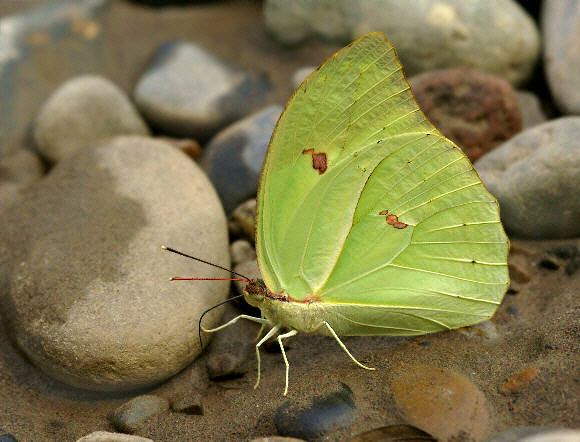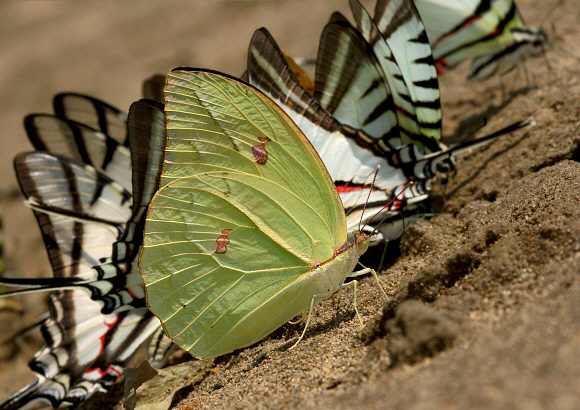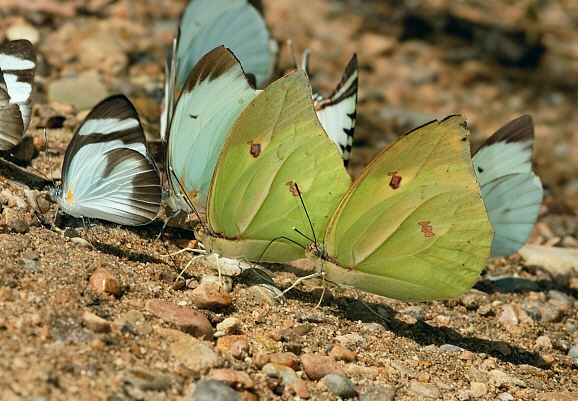
Introduction
There are 3 members of the genus Anteos, all confined to the neotropics.
The upperside of the male of this large species is normally only seen when the butterfly is in flight, and is primrose yellow with the apical area pale orange. The female has 2 forms, one like the male and the other white, with blackish discal markings and forewing borders.
Anteos menippe is a common species in lowland areas. It is found west of the Andes in Colombia, and east of the Andes in Venezuela, Brazil, Ecuador and Peru. It also occurs in Panama.
Habitats
The butterflies breed mainly in open transitional habitats along riverbanks, and are most commonly seen when migrating along river courses.
Lifecycle
The eggs are pale and skittle-shaped. They are laid singly on the leaves or flower buds of Cassia plants, although several eggs may be laid on a single plant during the course of a day by various females. The larva occurs in 2 colour forms, green or yellow depending on whether it feeds on the leaves or flowers of the plant. The pupa is green with a white lateral line. It is strongly bowed and has a dorsal keel.

Adult behaviour
The butterflies are frequently seen migrating along the banks of rivers in Amazonia, e.g. in Peru in August 2007, during a 6 hour journey by longboat along the Rio Madre de Dios, I watched these butterflies regularly passing the boat at a rate of approximately 40 per hour, all heading upstream.
Patches of mineral-rich damp sand along river beaches frequently attract swarms of Pieridae, and often one or two Anteos can be found amidst the masses of Itaballia, Phoebis, Ganyra and Eurema.
Only males imbibe moisture from sandbanks. Females are only seen when nectaring at flowers, or when flying from plant to plant, testing the foliage with olfactory sensors on their feet, as they try to locate suitable Cassia plants on which to oviposit.
Both sexes have a cryptic leaf-like underside, complete with raised “leaf veins” which enables them to blend perfectly amongst foliage. Although I have not found adults at roost, it is highly likely that they roost hanging from the foliage of trees, where their cryptic colouration would help them avoid being detected by avian predators.

